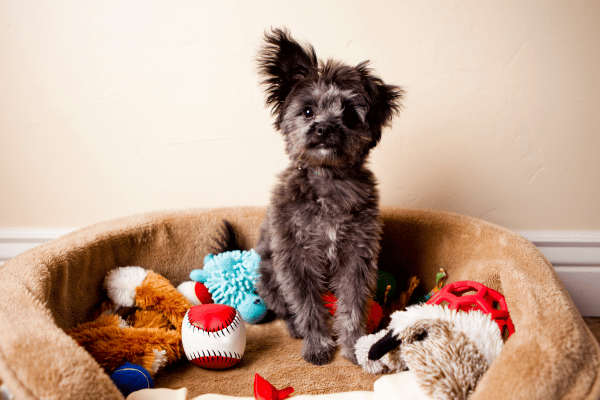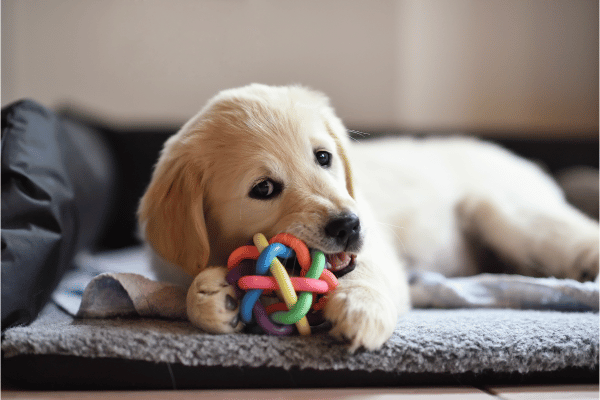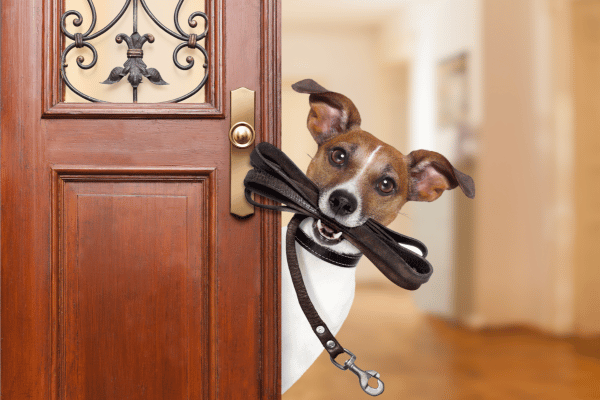Crafting a pet-friendly home enriches your pet’s life, ensuring safety and joy. This guide, infused with over 25 years of pet care experience and veterinary insights, offers essential tips for accommodating pets. Discover how to make your home a haven for your furry friends.
Essential Tips for a Pet-Friendly Home

Creating safe zones in your home is crucial. Pets, like humans, need their own space to unwind. A cozy corner with a soft bed or a cat tree can serve as a perfect retreat. This not only provides comfort but also a sense of security, making your home truly pet-friendly. Incorporating these areas ensures your pets have a sanctuary, promoting their well-being and happiness.
Engaging pets with interactive toys boosts their mental and physical health. Puzzle feeders, balls, and laser toys encourage active play, crucial for their development. This stimulation prevents boredom and destructive behaviors, fostering a harmonious living environment. Regularly introducing new toys keeps their interest peaked, ensuring your home is not just a living space but a stimulating playground for your beloved pets.
Pet-proofing is essential for a pet-friendly home. Securing loose wires, storing chemicals safely, and removing toxic plants protect your pets from harm. This proactive approach ensures they can explore their environment safely. Additionally, investing in pet-safe furniture and non-toxic cleaning products further enhances their safety. By taking these steps, you create a secure environment that supports your pets’ exploratory nature without compromising their well-being.
Design Choices for Pet-Friendly Living Spaces
Selecting durable, easy-to-clean materials is key. Fabrics like microfiber resist pet hair and scratches, while hard floors simplify accident cleanups. This consideration extends the life of your furnishings and keeps your home looking elegant. Opting for pet-friendly materials not only caters to aesthetics but also ensures your living space accommodates the playful and sometimes messy nature of pets, making your home welcoming for every family member.
Bringing the outdoors inside benefits pets greatly. Indoor plants safe for pets, like spider plants, add a refreshing touch while enriching your pet’s environment. A small indoor herb garden can also provide safe grazing for cats. These natural elements stimulate pets’ senses and encourage natural behaviors, enhancing their quality of life. Creating a home with touches of nature offers pets a more engaging and stimulating environment, fostering their curiosity and well-being.
Designating specific areas for play keeps pets entertained and active. Whether it’s a corner with their favorite toys or a dedicated playroom, these spaces encourage physical activity and mental stimulation. Incorporating climbing structures for cats or agility equipment for dogs can significantly enrich their daily routines. Tailoring these areas to your pet’s preferences ensures they have a stimulating environment to explore, play, and grow, making your home a truly pet-friendly haven.
Integrating Pet Needs into Home Design
Ensuring pets have easy access to fresh water and food is fundamental. Place bowls in accessible, quiet areas to encourage hydration and eating without stress. Consider elevated feeders for larger breeds to aid digestion. This setup not only caters to their basic needs but also integrates seamlessly into your home design, maintaining a clean and organized space. Thoughtful placement reflects a pet-friendly home that prioritizes the well-being of its furry inhabitants.
Creating a pet-friendly outdoor space, whether a secure balcony or a backyard, allows pets to enjoy fresh air safely. Incorporate fencing and safe plants to prevent escapes and ensure their safety. Outdoor areas offer pets a change of scenery and room for exercise, crucial for their physical and mental health. Tailoring these spaces for pets encourages outdoor exploration in a controlled, safe environment, enhancing their overall happiness and well-being.
Maintaining regular routines for feeding, play, and rest supports pets’ emotional health. Consistency in their daily schedule provides a sense of security and comfort. Incorporate comfortable resting areas throughout your home, like beds or cushions, in quiet corners for undisturbed sleep. This attention to routine and comfort underlines a pet-friendly home’s essence, ensuring pets feel loved and secure. It’s about creating a nurturing environment that caters to their needs and habits.
Tailoring Your Home for Pet Safety

Choosing non-toxic materials and plants is crucial for a pet-friendly home. Ensure that all fabrics, paints, and flooring materials are safe if ingested or touched by pets. Similarly, opt for plants that pose no risk to your pets if they decide to nibble on them. This proactive approach in selecting safe materials and greenery not only keeps your pets healthy but also gives you peace of mind, knowing your home environment is secure.
Securing windows and providing safe outdoor access are essential aspects of pet safety. Install sturdy screens to prevent falls and ensure balconies or yards are securely fenced, eliminating escape routes. This allows pets to enjoy the outdoors and fresh air without the risk of getting lost or injured. Making these adjustments in your home design prioritizes your pets’ safety while still allowing them the freedom to explore their surroundings confidently.
Having an emergency plan that includes your pets is vital. Keep a pet emergency kit ready, including food, water, medications, and vet records. Ensure your pets are microchipped and wear ID tags with up-to-date contact information. Preparing for emergencies by including pets in your plans ensures their safety during unexpected situations, reflecting a comprehensive approach to pet-friendly living that covers all aspects of their well-being.
Enhancing Comfort with Pet-Friendly Furniture
Investing in pet-friendly furniture enhances your home’s comfort and functionality. Choose sofas and chairs covered in durable, easy-to-clean fabrics like leather or microfiber, which can withstand the occasional scratch or spill. Opt for pieces with minimal gaps to prevent pets from getting stuck. This thoughtful selection of furniture not only maintains your home’s aesthetic but also supports a lifestyle that accommodates the playful and restful moments of your pets’ lives.
Strategically placing pet beds throughout your home ensures that your furry friends always have a cozy spot to rest, whether they want to be close to you or enjoy some quiet time alone. Consider the layout of your home and the natural habits of your pets when deciding where to place these beds. This strategy not only contributes to the overall design but also to the comfort and happiness of your pets.
Implementing innovative storage solutions for pet supplies keeps your home organized and pet-friendly. Designate specific areas for toys, leashes, and grooming tools. Consider built-in solutions or attractive baskets that blend with your decor. This organization not only declutters your space but also makes it easier to care for your pets, ensuring their essentials are always within reach. Thoughtful storage solutions enhance the functionality of your home while catering to the needs of your pets.
Optimizing Indoor Air Quality for Pets

Maintaining clean air inside your home is crucial for both pets and humans. Regular vacuuming with HEPA filters can significantly reduce pet dander and hair. Additionally, using air purifiers in areas where your pets spend most of their time helps remove airborne contaminants. This commitment to cleanliness and air quality not only ensures a healthier living environment but also minimizes allergies and respiratory issues, making your home a safer place for everyone.
Using non-toxic cleaning products is essential in a pet-friendly home. Pets are more susceptible to harsh chemicals due to their close proximity to floor surfaces. Opt for natural, pet-safe cleaners for floors, surfaces, and fabrics. This switch not only protects your pets from potential toxins but also contributes to a healthier environment for the entire household. Embracing eco-friendly cleaning solutions reflects a mindful approach to pet care and household maintenance.
Proper ventilation is key to maintaining a fresh and healthy home environment. Ensure that your pet’s sleeping and play areas are well-ventilated to prevent odors and maintain air quality. Opening windows regularly or using exhaust fans helps circulate air and reduce the buildup of pollutants. Thoughtful ventilation strategies not only benefit your pets but also create a more pleasant living space for all inhabitants, highlighting the importance of air quality in pet-friendly home design.
Fostering Social Interaction for Indoor Pets
Designating areas in your home for pets to socialize, such as shared living spaces where they can interact with family and other pets, fosters a sense of belonging and well-being. Incorporating elements like communal beds or toys encourages interaction and play. These social spaces not only support your pets’ emotional health but also integrate them more fully into family life, enhancing the bond between pets and their human companions.
Providing pets with access to window views can significantly enrich their indoor experience. Setting up perches or beds near windows allows them to observe the outside world, stimulating their curiosity and providing mental stimulation. For cats, bird feeders placed outside windows can offer hours of entertainment. These thoughtful additions ensure pets remain engaged and entertained, even when indoors, promoting a stimulating environment that caters to their natural instincts and curiosity.
Scheduling regular interactive playtimes and activities strengthens the bond between pets and their owners while providing essential mental and physical stimulation. Using toys that mimic hunting or foraging behaviors can be particularly engaging. Activities that involve both pets and owners, such as training sessions or interactive games, not only keep pets active and mentally sharp but also reinforce their social skills, ensuring they are well-adjusted and happy members of the household.
Prioritizing Pet Health and Wellness at Home

Ensuring regular veterinary check-ups and keeping a close eye on your pet’s health at home are fundamental. Observing changes in behavior or appetite can be early indicators of health issues. Establishing a routine for health monitoring, including regular weight checks and grooming, supports early detection and prevention of health problems. This proactive approach to pet health emphasizes the importance of a supportive home environment in maintaining the wellness and longevity of your pets.
Providing a balanced diet tailored to your pet’s specific needs is crucial for their overall health. Consulting with a veterinarian to determine the best nutritional plan ensures your pets receive the right balance of vitamins, minerals, and calories. Implementing structured feeding times and avoiding overfeeding contribute to preventing obesity and related health issues. Thoughtful diet management at home plays a significant role in promoting a healthy lifestyle for pets, reflecting a commitment to their well-being.
Minimizing stress and creating a comfortable home environment are essential for pet wellness. Implementing strategies such as providing quiet spaces, using pheromone diffusers, or engaging in calming activities can significantly reduce anxiety in pets. Ensuring your home is a safe, peaceful haven supports your pet’s emotional health, preventing stress-related behaviors and promoting a harmonious living situation. These comfort measures underscore the importance of a nurturing, attentive approach to pet care within the home.
Building a Routine for Pet Care Excellence
Adhering to consistent schedules for feeding and exercise is vital for pets’ health and happiness. Regular feeding times help regulate their digestion and energy levels, while daily walks or play sessions ensure they get sufficient physical activity. This routine not only supports their physical well-being but also provides a sense of security and predictability, enhancing their emotional health. Establishing these routines fosters a structured environment conducive to thriving pets.
Investing time in training and providing behavioral support lays the foundation for a well-adjusted pet. Positive reinforcement techniques strengthen the bond between pets and owners, promoting good behavior. Regular training sessions also offer mental stimulation and can help mitigate potential behavioral issues. This commitment to ongoing education and support is crucial for a harmonious home life, ensuring pets are not only well-behaved but also mentally engaged and satisfied.
Maintaining regular hygiene and grooming routines is essential for pets’ health and comfort. Regular baths, nail trims, and brushing not only keep pets clean but also provide an opportunity to check for any skin issues or parasites. These grooming sessions can become bonding experiences, reinforcing the pet-owner relationship. Prioritizing hygiene and grooming reflects a commitment to the overall well-being of pets, ensuring they remain healthy, comfortable, and happy.
Embracing Technology for Enhanced Pet Care
Leveraging smart devices, such as cameras and activity trackers, offers pet owners peace of mind by allowing them to monitor their pets remotely. These technologies can alert owners to unusual behaviors that may indicate health or safety issues, ensuring timely intervention. Integrating smart devices into pet care routines enhances the ability to maintain constant oversight, providing a modern solution to traditional pet care challenges and fostering a safer, more connected home environment.
Automated feeders and water dispensers ensure pets have consistent access to food and fresh water, even in the owner’s absence. These devices can be programmed to dispense meals at set times, supporting regular feeding schedules and preventing overeating. Similarly, water dispensers encourage hydration throughout the day. This automation aids in maintaining a structured care routine, contributing to pets’ health and well-being while accommodating busy lifestyles.
Interactive toys and enrichment apps play a crucial role in keeping pets engaged and mentally stimulated. These tools can mimic natural behaviors, such as hunting or foraging, providing entertainment and exercise. Apps designed for pet entertainment or training can also offer new ways to play and learn, enriching the pet’s daily routine. Embracing these technological advancements supports a dynamic, stimulating environment for pets, enhancing their quality of life through innovation.
Cultivating a Community for Pet Owners

Engaging with local pet groups and communities offers invaluable support and resources for pet owners. These networks can provide advice, share recommendations for pet services, and organize meetups for socialization. Building connections within these communities fosters a sense of belonging and offers a platform for sharing experiences and challenges. This communal approach to pet ownership enriches the pet care experience, promoting a collaborative environment where owners can learn and grow together.
Attending pet-friendly events, such as adoption fairs, dog walks, or pet shows, can be a great way for pets and owners to socialize and stay active. These events offer opportunities to meet other pet enthusiasts, exchange tips, and discover new pet products and services. Participation not only enhances the social lives of pets and owners but also strengthens the bond between them, contributing to a vibrant, engaged pet community.
Online forums and social media groups dedicated to pet care provide a platform for owners to seek advice, share stories, and find support from a wider community. These digital spaces allow for the exchange of information on various topics, from health concerns to behavioral tips. Leveraging these online communities can help pet owners feel less isolated in their pet care journey, offering access to a wealth of knowledge and experience from fellow pet enthusiasts worldwide.
Embracing a Pet-Friendly Lifestyle for a Happier Home
Creating a pet-friendly home goes beyond mere adjustments in space; it’s about fostering an environment where pets and humans coexist in harmony and happiness. From ensuring safety with pet-proofing measures to enhancing comfort through pet-specific furniture, each step taken is a testament to the love and care pet owners hold for their furry family members. Incorporating technology for better care, engaging with pet communities for support, and prioritizing pets’ health and wellness are pivotal in crafting a living space that caters to their needs.
As we navigate the joys and challenges of pet ownership, remember, the journey is as rewarding for the pet as it is for the owner. I encourage you to share your experiences and tips in the comments below or join a pet care forum. Your insights could greatly benefit others in our community, fostering a collective learning environment.
Lastly, I urge you to continuously seek ways to improve your pet’s quality of life. Whether it’s by trying out a new interactive toy, attending a pet-friendly event, or simply spending more quality time together, every small action contributes to a happier, healthier pet. Visit our website for more resources, or leave a comment sharing how you’ve made your home more pet-friendly. Together, let’s create nurturing spaces that celebrate and accommodate our beloved pets.
Reference: Paws and Palette: Designing Pet-Friendly Homes
III. FAQs about environmental enrichment
- What is environmental enrichment for cats?For cats, it involves creating a stimulating environment that caters to their instinctual behaviors like climbing, scratching, and hunting.
- What is environmental enrichment for dogs?For dogs, it includes activities and modifications to their environment that encourage physical activity, mental stimulation, and social interaction.
- What can you do to make a cat and dog get along?Introduce them slowly and under controlled conditions, ensure each has their own space, and supervise their interactions until they are comfortable with each other.
- What is Environmental Enrichment for Dogs?Environmental enrichment for dogs refers to strategies and activities designed to stimulate your pet's mind and senses. This includes interactive toys, puzzle games, and exercises that encourage exploration and learning.
- Why is Environmental Enrichment Essential for Canine Well-being?Environmental enrichment is crucial for keeping your dog mentally stimulated and physically active, helping to prevent behavioral issues such as anxiety and boredom, and promoting a happier and healthier life.
- How Does Environmental Enrichment Help with Dogs' Separation Anxiety?Enrichment activities can distract your dog during your absence, reducing separation anxiety. Slow-release food toys or canine puzzles are great options to keep your pet engaged.
- Practical Environmental Enrichment Ideas for Dogs at Home?Enrich your dog's environment with mind-challenging toys, homemade obstacle courses, and hide-and-seek games. These simple activities can make a significant difference in your pet's quality of life.
- How Often Should I Refresh Enrichment Activities for Dogs?Rotate enrichment activities regularly to keep your dog engaged and interested. Introducing new toys or tweaking existing games can keep the routine stimulating.
- Are There Any Risks in Environmental Enrichment for Dogs?While environmental enrichment is beneficial, it's crucial to choose activities suitable for your dog's age, size, and physical condition to avoid injuries or stress.
- Can I Create DIY Environmental Enrichment Activities for My Dog?Yes, DIY enrichment activities are an excellent way to engage your pet without spending much. Use household items to create interactive and stimulating games.

Join Dan Morgan at dwfocus.com, your hub for ‘4 paws and owners’ wisdom! Explore a world where pet care meets expert insights, crafted by Dan, a seasoned vet with a heart for animals. Engage with stories, tips, and advice that every pet owner needs. From playful pups to graceful cats, Dan Morgan guides you through the joys and challenges of pet parenting. Embrace your love for pets with Dan’s expert guidance on dwfocus.com. #4PawsAndOwners #DanMorganPetExpert #dwfocus






